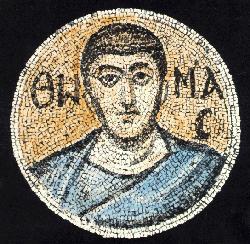Dialogue of the Saviour on:
[Wikipedia]
[Google]
[Amazon]
The Dialogue of the Saviour is one of the
 The text is somewhat peculiarly constructed, containing also a few large interruptions seemingly out of place within, and only superficially edited into, the dialogue. Starting with a series of questions ultimately concerning esoteric knowledge and its pursuit, the text abruptly turns to a description of the origin of the world, interrupted briefly by a return to dialogue. Having expounded the description of creation, it returns to the Gnostic question and answer session about how to achieve
The text is somewhat peculiarly constructed, containing also a few large interruptions seemingly out of place within, and only superficially edited into, the dialogue. Starting with a series of questions ultimately concerning esoteric knowledge and its pursuit, the text abruptly turns to a description of the origin of the world, interrupted briefly by a return to dialogue. Having expounded the description of creation, it returns to the Gnostic question and answer session about how to achieve
Nag Hammadi Library English version of the text
Gnostic apocrypha Coptic literature Nag Hammadi library {{NewTestament-apocrypha-stub
New Testament apocrypha
The New Testament apocrypha (singular apocryphon) are a number of writings by early Christians that give accounts of Jesus and his teachings, the nature of God, or the teachings of his apostles and of their lives. Some of these writings were cite ...
texts that was found within the Nag Hammadi library
The Nag Hammadi library (also known as the " Chenoboskion Manuscripts" and the "Gnostic Gospels") is a collection of early Christian and Gnostic texts discovered near the Upper Egyptian town of Nag Hammadi in 1945.
Thirteen leather-bound papyr ...
of predominantly Gnostic
Gnosticism (from grc, γνωστικός, gnōstikós, , 'having knowledge') is a collection of religious ideas and systems which coalesced in the late 1st century AD among Jewish and early Christian sects. These various groups emphasized pe ...
texts. The text appears only once in a single Coptic codex, and is heavily damaged. The surviving portions indicate that the general content is a dialogue with Jesus
Jesus, likely from he, יֵשׁוּעַ, translit=Yēšūaʿ, label= Hebrew/ Aramaic ( AD 30 or 33), also referred to as Jesus Christ or Jesus of Nazareth (among other names and titles), was a first-century Jewish preacher and religiou ...
, in a similar manner to, and possibly based on, the Gospel of Thomas
The Gospel of Thomas (also known as the Coptic Gospel of Thomas) is an extra-canonical sayings gospel. It was discovered near Nag Hammadi, Egypt, in December 1945 among a group of books known as the Nag Hammadi library. Scholars speculate ...
.
Contents
 The text is somewhat peculiarly constructed, containing also a few large interruptions seemingly out of place within, and only superficially edited into, the dialogue. Starting with a series of questions ultimately concerning esoteric knowledge and its pursuit, the text abruptly turns to a description of the origin of the world, interrupted briefly by a return to dialogue. Having expounded the description of creation, it returns to the Gnostic question and answer session about how to achieve
The text is somewhat peculiarly constructed, containing also a few large interruptions seemingly out of place within, and only superficially edited into, the dialogue. Starting with a series of questions ultimately concerning esoteric knowledge and its pursuit, the text abruptly turns to a description of the origin of the world, interrupted briefly by a return to dialogue. Having expounded the description of creation, it returns to the Gnostic question and answer session about how to achieve salvation
Salvation (from Latin: ''salvatio'', from ''salva'', 'safe, saved') is the state of being saved or protected from harm or a dire situation. In religion and theology, ''salvation'' generally refers to the deliverance of the soul from sin and its ...
via gnosis
Gnosis is the common Greek noun for knowledge ( γνῶσις, ''gnōsis'', f.). The term was used among various Hellenistic religions and philosophies in the Greco-Roman world. It is best known for its implication within Gnosticism, where it ...
, but is abruptly interrupted by a ''natural history list'' of the Four Elements
Classical elements typically refer to earth, water, air, fire, and (later) aether which were proposed to explain the nature and complexity of all matter in terms of simpler substances. Ancient cultures in Greece, Tibet, and India had simi ...
, the powers of heaven and earth, and so forth.
After the history list, there is an ''apocalyptic'' vision, in which Didymus Judas Thomas, Mary, and Matthew, are shown hell from the safety of the edge of the earth, and an angel announces that the material world was an unintended evil creation (see Yaltabaoth). Finally, the text returns to the question-based dialogue.
Composition
The rather artificial manner in which other texts (the vision of hell, the natural history list, and the creation theory) appear to have been inserted into a question-based dialogue, and the abrupt change halfway through from referring to Jesus as ''Lord'' to referring to him as ''Saviour'', has led many to propose that it is based on four or five different original works. However, due to the damage that the text has suffered, study of it has so far proven too difficult to identify what these texts might be (although the dialog shares an affinity with the Gospel of Thomas). The final redaction is estimated to have taken place around 150 AD.References
External links
Nag Hammadi Library English version of the text
Gnostic apocrypha Coptic literature Nag Hammadi library {{NewTestament-apocrypha-stub